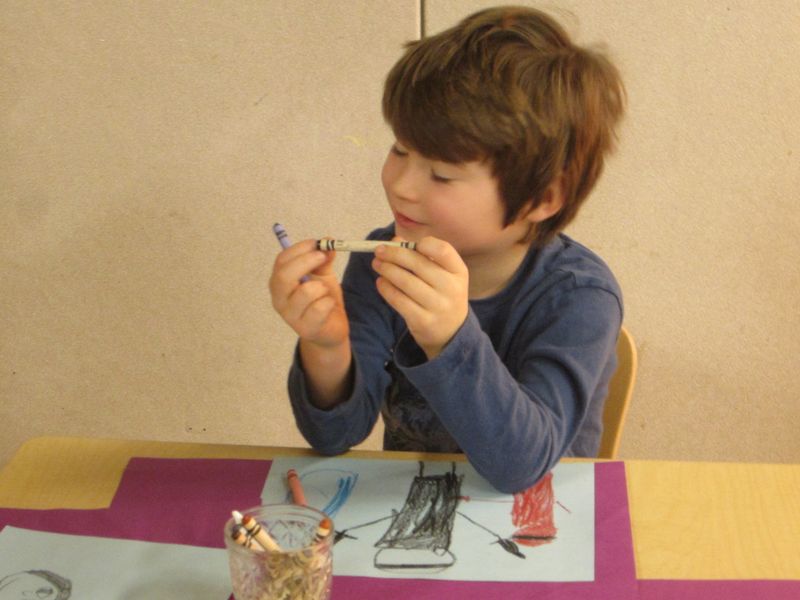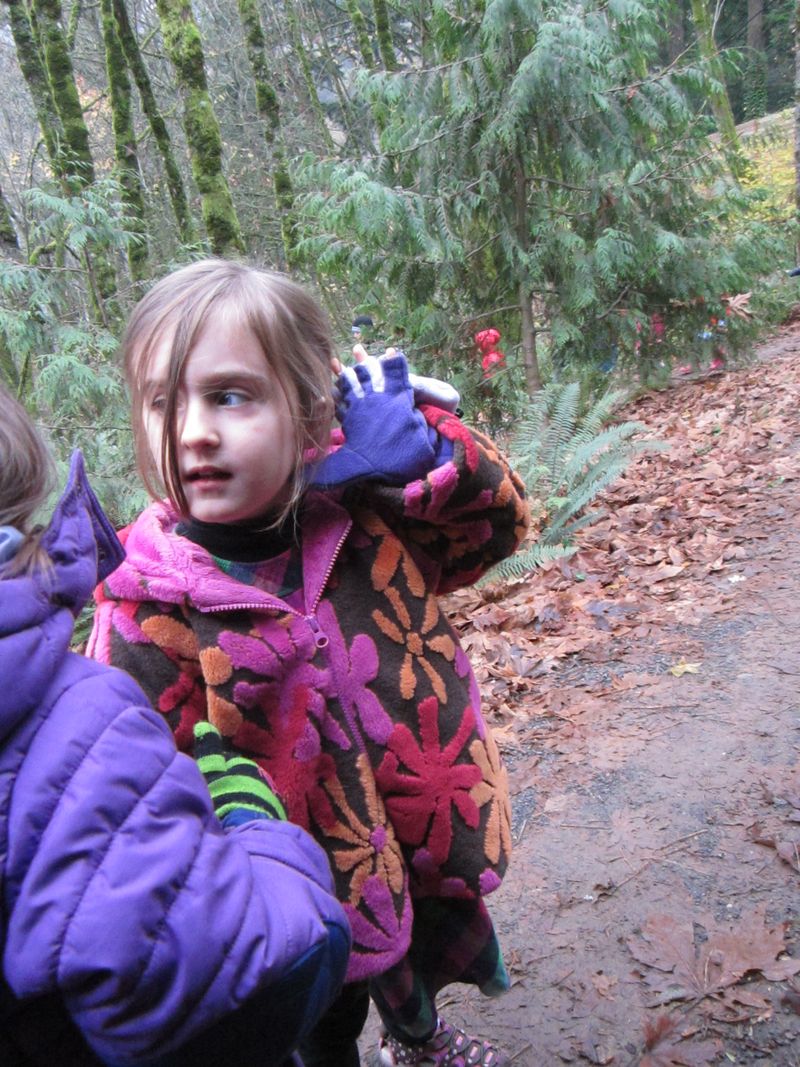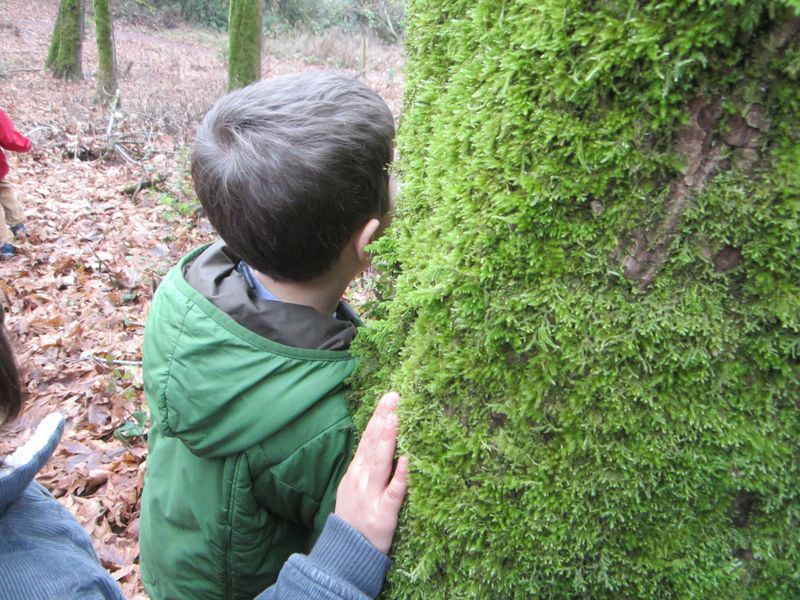The Other Way to Listen
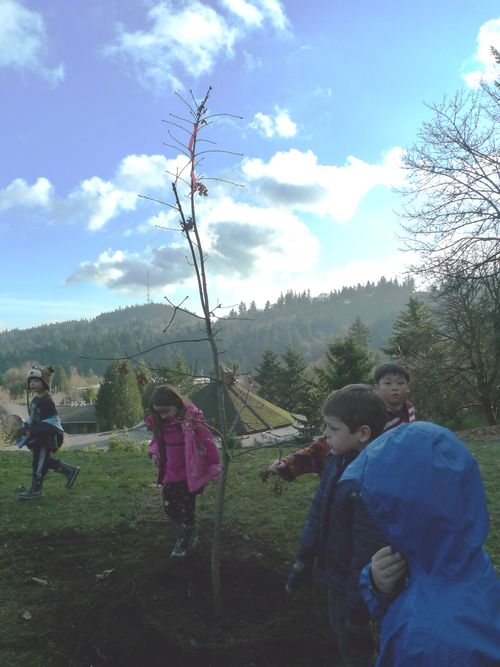
"When you know the "other way to listen," you can hear wildflower seeds burst open, you can hear the rocks murmuring, and the hills singing, and it seems like the most natural thing in the world. Of course it takes a lot of practice, and you can't be in a hurry…"
-from The Other Way to Listen by Byrd Baylor and Peter Parnall
This year we have been spending a lot of time in the Arboretum. We have observed, noticed, explored, discovered and played in many special places like the Lower Meadow, the Upper Meadow, the Running Space, House of Summer and Colorland. We have enjoyed our time in these spaces in nature, connecting to the trees, the leaves and even the wide-open air around us.
We have been paying attention to the energy, excitement, and connections that the children in the community have built with the natural world since the beginning of the year. These connections are visible through their wonder, their care and their love for all of these special places we visit, as well as the things that live inside it. And because of these connections that they have already made, we are really paying close attention and wondering how to go deeper into the exploration of our connection to this special forest.
As we prepare to go do deeper into our exploration, first we need to practice listening. Yes, listening. The forest, the trees, the leaves,the wide-open spaces….they are all telling us something…but what?
As we begin our exploration, we ask the children to think about listening.
What is listening? What does it mean to listen?
C.G.: You are listening to someone, looking at them and knowing what they say.
F.A.: In circle, you listen to the teachers.
R.S.: Listen when it is raining!
A.H.: To the raindrops!
S.P.: If you want another idea you have to listen and if you have another idea they have to listen to us!
F.D-L: Listening to a brush, a brush that you paint with and if it makes a different noise it is runny out of paint.
D.W.: Puppy dog barking.
C.C.: people walking on a path.
C.G.: When people are talking.
H.F-A.: You listen when you are a secret spy.
Where do you listen?
A.H.: In the river, fishes can splash
J.L.: When you are painting.
What are you listening for?
A.H.: A story!
What tools do you need to listen?
F.A.: Ears!
R.S.: Owl eyes! You use owl eyes to see
L.H.: With your arms.
D.W.: You can bang a stick on the ground.
S.P.: When you have your deer feet, you have t sneak and be quiet and listen.
A.H.: If other people are talking you might not hear and they will have to tell you again and again and again.
We look to mentor authors to help us get ready for our exploration into the natural world. Byrd Baylor is an appropriate mentor who has a lot of schema for listening to the natural world.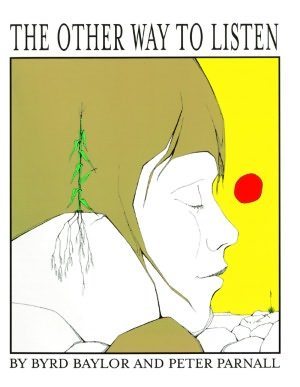
After we read her book, The Other Way to Listen, we ventured into the Arboretum to practice this difficult, yet important way of listening when we are in nature.
What did you hear when you were in the forest really listening?
F.A.: I heard a tree. It was like music.
H.F-A.: I heard the trees and they were whispering
D.W.: I heard it in my tummy!
O.A.: I heard rocks. They were trying to share it to every single thing in the forest that we had come to search.
S.P.: I hear the wind blowing. You feel it inside. It feels crumpling.
This winter we will continue to visit the Arboretum and the many magical things that live inside of it! During our many trips of exploration and discovery, we will continue to practice listening with all of our senses.


